Nasir-al Mulk Mosque, also known as the Pink Mosque, is a renowned and highly sought-after attraction in Shiraz, Iran. It was constructed during the reign of the Qajar dynasty by Hasan Ali Nasir-al Mulk and took several years to complete, from 1293 to 1305 (SH). The mosque is located on Lotf Ali Khan Street in Shiraz and holds significant historical and cultural value. With its abundant use of pink tiles in its decoration, the mosque has earned its nickname, the Pink Mosque. Considered one of the most beautiful mosques in Iran, Nasir-al Mulk Mosque stands as a testament to the rich architectural heritage of the region.
To make the most of your visit and explore this stunning mosque, consider booking a walking city tour in Shiraz. The tour will provide you with valuable insights into the history and significance of Nasir-al Mulk Mosque, ensuring a truly memorable experience.
Historical background of Pink Mosque Iran
Nasir al Mulk Mosque, also known as the Pink Mosque, carries a rich historical background that adds to its allure. Construction of the mosque began in the late 19th century during the Qajar dynasty, and it was completed in 1888. The mosque was commissioned by Hasan Ali Nasir al Mulk, a prominent nobleman and philanthropist of the time. Its architectural style reflects a blend of traditional Persian and Islamic elements, with intricate tile work, delicate stucco, and beautifully carved wooden columns. Pink Mosque served as a place of worship and a center for religious and cultural activities throughout the years, remaining a symbol of spiritual devotion and architectural excellence. Today, it stands as a testament to the artistic achievements and historical significance of the Qajar era in Iran’s rich cultural heritage.
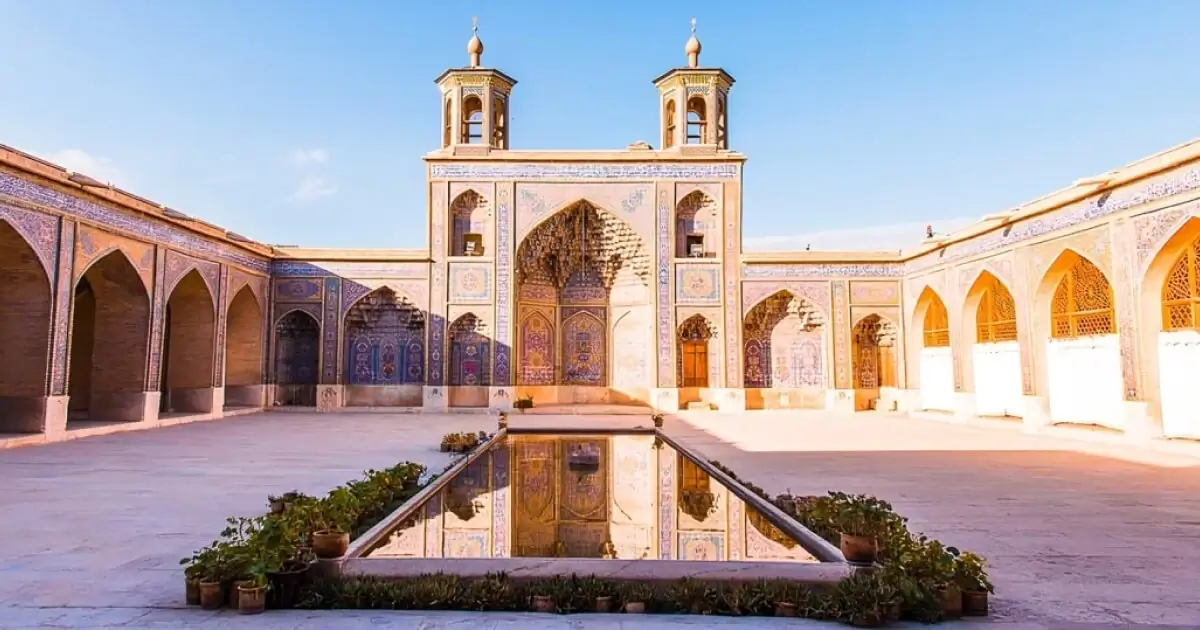
The architectural style of Nasir al Mulk Mosque
Nasir al Mulk Mosque is a masterpiece of architectural design, showcasing a harmonious blend of Persian and Islamic influences. The mosque exhibits elements of traditional Persian architecture, with its intricate tile work, delicate stucco patterns, and exquisite muqarnas (stalactite-like decorative elements). The facade of the mosque is adorned with a symphony of colors, featuring an array of vibrant tiles in shades of blue, pink, and green. The interior is equally mesmerizing, with its soaring arches, intricately carved wooden columns, and breathtaking stained glass windows that create a kaleidoscope of colors when sunlight pours in. The prayer hall is particularly captivating, with its symmetrical layout and a mihrab (prayer niche) beautifully adorned with tile work. The architectural style of Pink Mosque is a testament to the skilled craftsmanship and artistic vision of its builders, leaving visitors in awe of its beauty and grandeur.
When is the best time to visit Pink Mosque Iran?
The best time to visit Pink Mosque Iran is early in the morning, preferably before 10 a.m. This is when the mosque is relatively less crowded, allowing you to fully appreciate its beauty and tranquility. Additionally, the morning sunlight casts a magical glow through the stained glass windows, creating a mesmerizing display of colorful patterns on the floor and walls of the mosque’s interior. The early hours also offer a chance to capture stunning photographs without the distraction of large crowds. If you want to witness a unique spectacle, autumn and winter are particularly recommended, as the low-angle sunlight during these seasons creates breathtaking reflections and plays of light in the mosque’s prayer hall. So, plan your visit in the morning hours to immerse yourself in the ethereal ambiance of Nasir-al Mulk Mosque and witness its enchanting beauty at its finest.
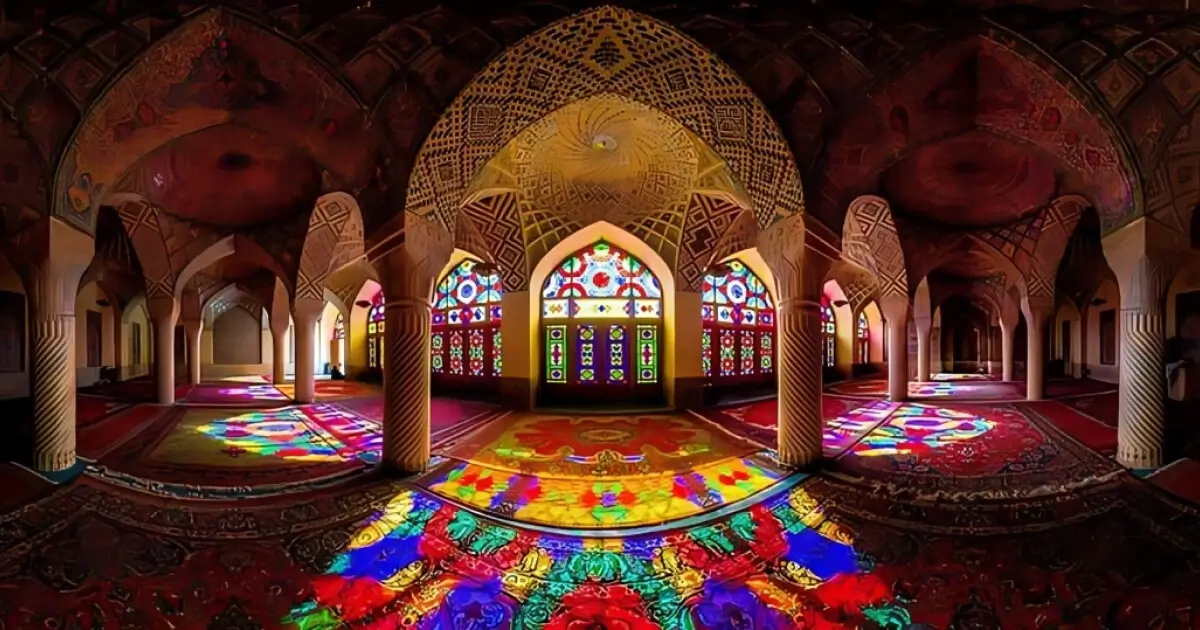
Exploring the Magnificent Parts of Nasir al Mulk Mosque
Nasir al Mulk Mosque is a marvel of architectural design, featuring various distinct parts that contribute to its captivating beauty. From the enchanting Shabestan, where colorful lights dance during autumn and winter, to the serene and inviting yard, every element of this mosque is meticulously crafted. The prayer hall, with its intricate wooden columns and stunning stained glass windows, creates a breathtaking ambiance. The mihrab serves as a focal point of devotion, while the iwans and tile work add to the mosque’s grandeur. Let’s explore the different parts that make Nasir al Mulk Mosque an architectural masterpiece.
- Shabestan
The Shabestan is a part of the mosque designed for night prayers. It features a unique architectural design and is especially captivating during autumn and winter when the oblique angle of the sun creates stunning colorful lights inside the prayer hall.
- Yard
The mosque’s yard serves as an open space for gatherings and social activities. It provides a tranquil and peaceful atmosphere where visitors can relax and admire the beautiful architectural elements surrounding it.
- Prayer Hall
The main prayer hall of Pink Mosque is a sight to behold. It showcases exquisite craftsmanship with its intricately carved wooden columns, arches, and stunning tile work. The hall is adorned with colorful stained glass windows that cast a mesmerizing array of hues when sunlight filters through them.
- Mihrab
The mihrab is a semicircular niche located in the prayer hall, indicating the direction of Mecca. The mihrab of Nasir al Mulk Mosque is a masterpiece of tile work and intricate design, serving as a focal point for worshippers during prayer.
- Iwan
An iwan is a vaulted space with an arched entrance. Nasir al Mulk Mosque features beautifully decorated iwans, adding to its architectural grandeur. These iwans provide a sense of grand entrance and serve as transitional spaces within the mosque.
- Stained Glass Windows
One of the most distinctive features of Pink Mosque is its stunning stained glass windows. These windows are intricately designed with vibrant colors and intricate patterns, creating a breathtaking interplay of light and color inside the mosque.
- Tile Work
The mosque is adorned with an abundance of exquisite tilework. The tiles are meticulously crafted and arranged in various intricate patterns, showcasing the mastery of Persian tile artisans. The use of pink tiles in particular gives the mosque its nickname, the Pink Mosque.
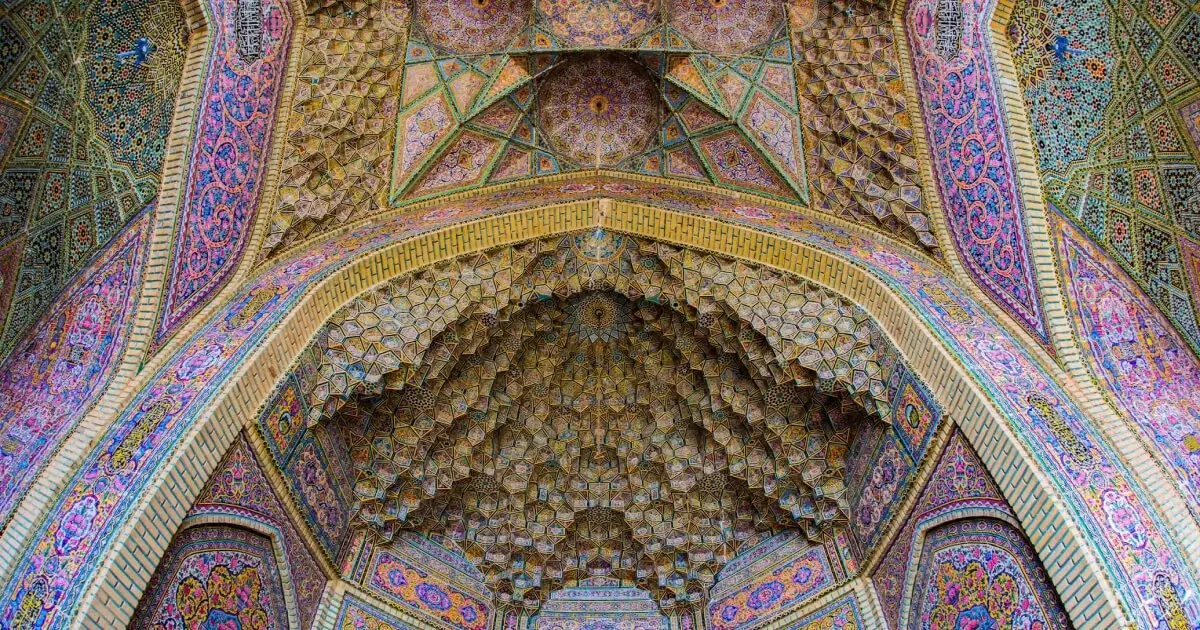
Tips for visiting Nasir al Mulk Mosque
- Transportation: Consider using public transportation to reach Nasir al Mulk Mosque. It is recommended due to limited parking availability near the mosque. Taxis and ridesharing services are also convenient options.
- Timing: Plan to arrive early in the morning, preferably before 10 a.m., to experience the mosque when it is less crowded and witness the stunning colors illuminated by morning sunlight.
- Ticket Information: To enter Nasir al Mulk Mosque, you will need to purchase a ticket. Tickets can be obtained at the entrance or from designated ticket counters. Be prepared to show your ticket upon entry.
- Dress Code: As Nasir al Mulk Mosque is a religious site, modest attire is required. Both men and women should dress conservatively, covering their shoulders, arms, and legs. Additionally, women are advised to bring a headscarf to wear inside the mosque.
- Photography: Capture the beauty of Pink Mosque by bringing your camera. Photography is allowed inside the mosque, but be mindful of other visitors and avoid using flash or tripods that may disrupt the tranquil atmosphere.
- Respectful Behavior: Remember that Nasir al Mulk Mosque is a place of worship. Maintain a respectful demeanor, speak softly, and avoid any disruptive behavior. It is also customary to remove your shoes before entering the prayer hall.
- Guided Tours: Consider joining a guided tour to gain deeper insights into the mosque’s history, architecture, and cultural significance. A knowledgeable guide can enhance your understanding and appreciation of this remarkable site.
Nearby Attractions Nasir al Mulk Mosque
These nearby attractions in Shiraz offer a diverse range of experiences, from architectural marvels to vibrant marketplaces, allowing visitors to delve deeper into the city’s rich cultural heritage after they visit Pink Mosque.
- Zinatol Molk House (Qavam House): Visit this stunning 19th-century mansion showcasing traditional Persian architecture, with intricate tile work, beautiful stained glass windows, and picturesque gardens.
- Shah Cheragh Holy Shrine: Explore this revered pilgrimage site known for its breathtaking mirror work and exquisite tile designs. The mausoleum houses the tombs of brothers and sons of Imam Reza, attracting visitors with its spiritual and architectural grandeur.
- Vakil Bazaar and Saraye Moshir: Immerse yourself in the vibrant atmosphere of these bustling markets. Discover a wide array of handicrafts, spices, textiles, and traditional Persian rugs, while experiencing the local culture and enjoying some delightful Persian cuisine.
- Vakil Mosque: Marvel at the architectural beauty of this historic mosque, featuring intricate tile work and a stunning prayer hall. Admire the grandeur of its design and soak in the spiritual ambience.
- Arg-e Karim Khan: Step back in time and explore this fortified citadel that served as the seat of power during the Zand dynasty. Discover its imposing structure, well-manicured gardens, and learn about its fascinating historical significance.
Discovering the Allure of Shiraz Beyond Nasir al Mulk Mosque
Visiting Pink Mosque in Shiraz is a truly enchanting experience that showcases the beauty of Persian architecture and design. Delve deeper into the city’s heritage, indulge in local flavors, and embrace the warmth of Shirazi hospitality. Each attraction tells a unique story and adds another layer of wonder to your journey. As you leave Nasir al Mulk Mosque, carry with you memories of its ethereal beauty and the anticipation of the discoveries that await you in the captivating city of Shiraz. Plan your Iran tours to experience the best of Shiraz’s cultural treasures and create unforgettable memories.
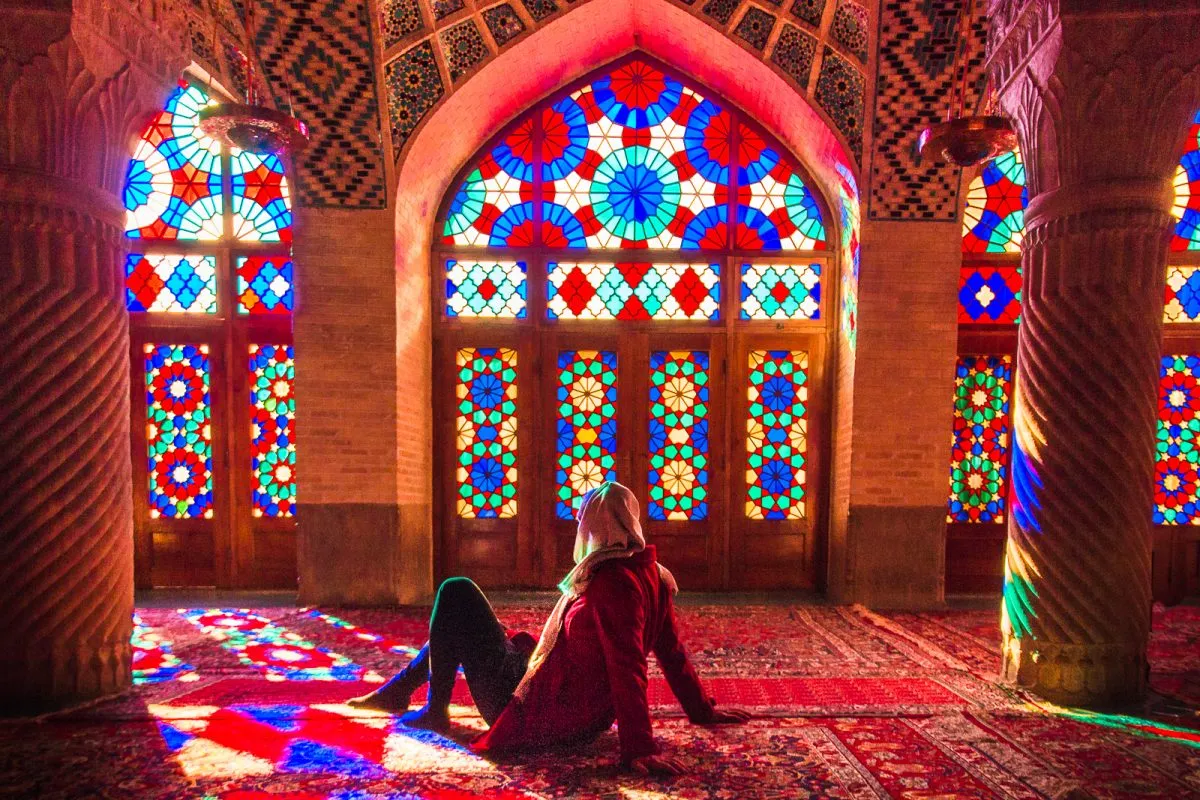

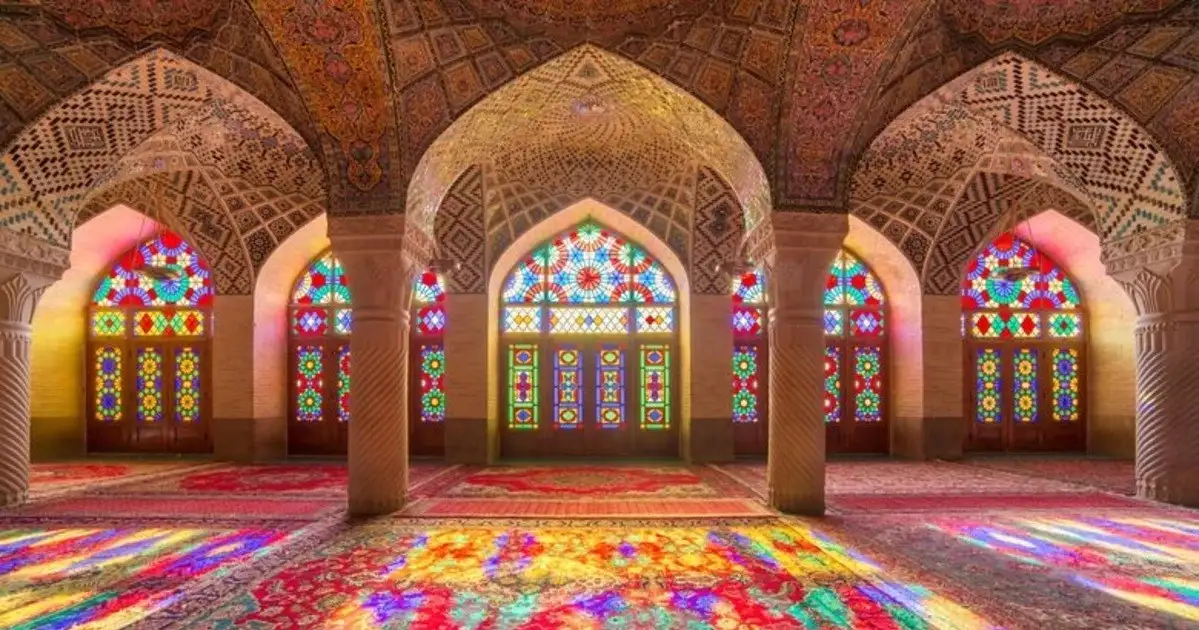
0 Comment